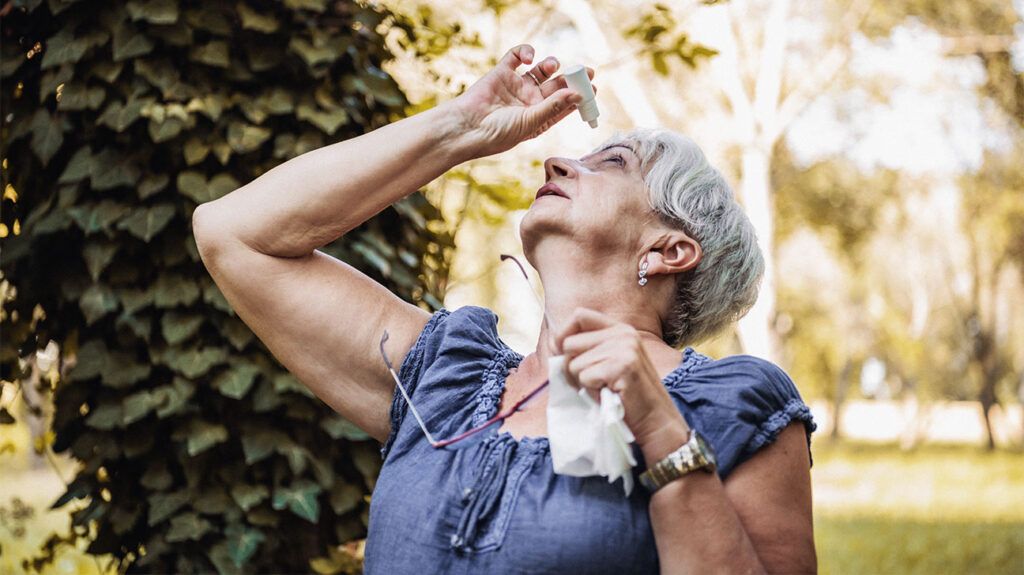Sjögren disease, which is an autoimmune condition, may increase a person’s risk of developing non-Hodgkin’s lymphoma (NHL). NHL is a type of cancer that starts in white blood cells — lymphocytes — and affects the lymphatic system.
B lymphocytes are immune cells that usually create antibodies to fight germs. In Sjögren disease, these cells are overactive due to an incorrect immune response.
The overactive cells build up in certain glands, such as the salivary glands. This can lead to symptoms of Sjögren disease such as dry mouth. Overstimulation of the B lymphocytes can also increase the risk of NHL.
NHL in people with Sjögren disease is often treatable and has a good outlook.
This article looks at how high the risk of developing NHL from Sjögren disease is and who may be at risk. It also looks at monitoring for NHL in people with Sjögren disease, and how NHL may affect treatment for the disease.

According to 2018 research, NHL occurs in around 2.7% to 9.8% of people who have primary Sjögren disease. Sjögren disease occurs in around 0.1 to 1% of the population.
The primary form of Sjögren disease occurs alone, rather than in combination with other rheumatic diseases such as rheumatoid arthritis or systemic lupus erythematosus. Secondary Sjögren disease occurs alongside other rheumatic conditions.
Not everyone who has Sjögren disease has the same risk of NHL.
The disease can cause a variety of symptoms that may differ between individuals. People who experience certain symptoms may have a higher risk of developing NHL.
According to the Arthritis Foundation, symptoms and other factors that may increase a person’s risk of NHL include:
- a type of nerve damage known as peripheral neuropathy
- enlarged salivary glands, especially if they remain swollen for a prolonged time
- the presence of abnormal proteins — gamma globulins and cryoglobulins — in the blood
- persistently swollen lymph nodes in the groin, neck, and armpits
- Raynaud’s disease, which causes poor circulation in the fingers, toes, knees, and ears
- petechiae or purpura, which are small areas of bleeding under the skin
The risk of developing NHL may be as high as 40% for a person with Sjögren disease who has three to six of these symptoms. In someone with fewer than two of these symptoms, the risk is less than 4%.
People with Sjögren disease who have symptoms that increase their risk of lymphoma may want to visit a doctor more often to monitor their health. A person who has Sjögren disease should discuss their risk of NHL with a healthcare professional.
There is no specific screening test for NHL. However, a doctor may look for certain warning signs or symptoms of lymphoma, which include:
- persistently enlarged lymph nodes
- enlarged salivary glands
- unintended weight loss
- night sweats
- fevers
A doctor may also order blood tests to check for proteins in the blood that can increase the risk of NHL.
There is no cure for Sjögren disease, and treatment aims to relieve the symptoms.
Treatments may include:
- medication to increase salivary production
- lubricating eye drops to treat dry eyes
- medications to treat pain and inflammation
- a minor procedure to plug the tear ducts to treat dry eyes
More research is necessary to determine the most effective treatment methods for NHL in people with Sjögren disease. However, the treatment of either condition does not typically interfere with that of the other.
Mucosa-associated lymphoid tissue (MALT), the type of NHL that most commonly occurs in people with Sjögren disease, usually grows slowly and has a positive outcome.
Some doctors opt not to treat the NHL if it is localized to one area of the body and does not cause symptoms. In these cases, a doctor may simply monitor the condition for signs of change.
According to a
Doctors may combine rituximab with other medications, including chemotherapy drugs such as alkylating agents, fludarabine (Fludara), or bendamustine (Bendeka).
Sjögren disease does not usually affect a person’s life expectancy.
The 5-year relative survival rate for people who develop marginal zone lymphoma NHL, which includes MALT, is 80%. MALT NHL is the type of lymphoma experts most commonly associate with Sjögren disease.
The relative survival rate suggests how long someone with a condition may live after their diagnosis compared to someone without the condition of the same race, sex, and age over a specific time. This is different from overall survival rate, which is a percentage of people still alive for a specific time after diagnosis of a condition.
It is most important to remember that figures are estimates, and everyone is different. A person can speak with a doctor about their specific condition.
What kinds of cancers are associated with Sjögren disease?
Besides lymphomas, researchers
- endometrial cancer
- prostate cancer
- cancer of the urinary tract
- liver and bile duct cancer
What are the long-term complications of Sjögren disease?
Other than lymphoma, complications of Sjögren disease can include:
- vision problems and other problems from dry eyes
- scarring and infections in the lungs
- pregnancy complications, such as a rash or heart problems in the baby
- kidney problems, such as kidney stones
- hypothyroidism
- irritable bowel syndrome (IBS)
- vasculitis, an inflammation of the blood vessels
People with Sjögren disease, an autoimmune inflammatory condition, may have a higher risk of developing non-Hodgkin’s lymphoma (NHL) than the general population.
Both diseases involve white blood cells, known as lymphocytes. In Sjögren disease, B lymphocytes become overactive. The overstimulated cells can cause inflammation and other symptoms, and may increase the likelihood of NHL.
A person with Sjögren disease may be at especially high risk of developing NHL if they have certain symptoms, including persistently enlarged lymph nodes and salivary glands.
The overall risks of developing NHL are low, and the type of NHL that most frequently occurs in people with Sjögren disease is often highly treatable.
